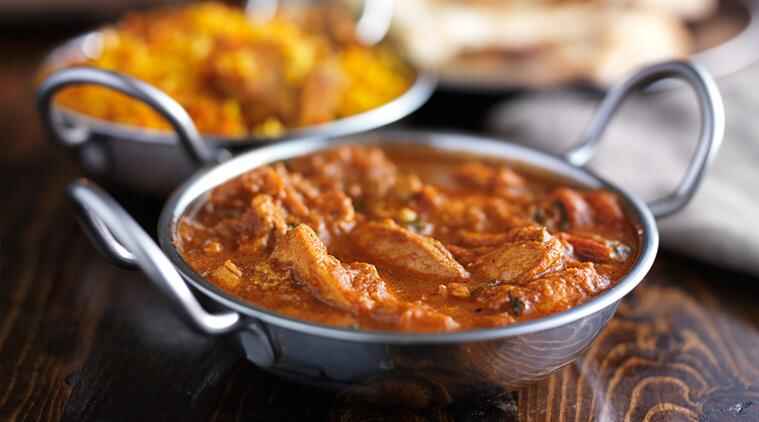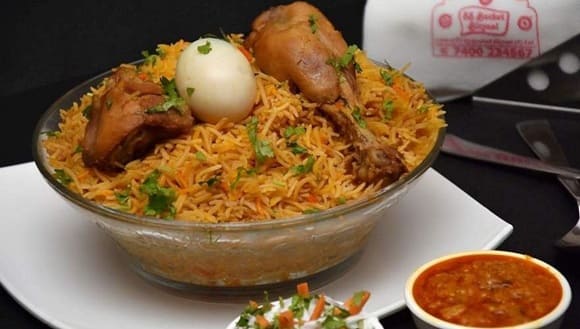India, a land of diverse cultures, religions, and culinary traditions, showcases a fascinating blend of vegetarian and non-vegetarian diets. While many perceive India as a predominantly vegetarian nation, the data tells a different story. According to the National Health and Family Survey (NHFS-5), over two-thirds of Indians aged 15 to 49 consume meat regularly, be it daily, weekly, or occasionally. This is a notable increase compared to the NHFS-4 survey, highlighting a steady rise in the preference for non-vegetarian food.
In 2025, let’s take a closer look at the top 10 states in India where non-vegetarian diets dominate, each with its unique culinary identity.

1. Nagaland: (99.8% Non-Vegetarians)
Topping the list is Nagaland, where an astounding 99.8% of the population identifies as non-vegetarian. Meat is more than just food here—it’s a way of life. Naga cuisine is known for its bold flavors, smoked meats, and unique preparation styles. Pork dominates the local diet, often smoked, fermented, or cooked with bamboo shoots and axone (fermented soybean). Dishes like Smoked Pork Curry and Bamboo Shoot Stew are staples in almost every household.
2. West Bengal: (99.3% Non-Vegetarians)
West Bengal, with its rich culinary heritage, ranks second with 99.3% of its population consuming highest meat foods. Fish, especially freshwater varieties, forms an integral part of Bengali cuisine. Iconic dishes such as Shorshe Ilish (Hilsa in mustard curry) and Chingri Malai Curry (prawns cooked in coconut milk) are cherished across the state. Additionally, the Kolkata Biryani, known for its subtle flavors and the addition of potatoes, remains a timeless favorite. Mutton curry, often paired with luchis (fried flatbreads), is another classic that embodies Bengal’s love for meat.
3. Kerala: (99.1% Non-Vegetarians)
Kerala, often referred to as “God’s Own Country,” is a paradise for food lovers, particularly those who enjoy seafood and spicy curries. With 99.1% of its population indulging in non-vegetarian food, Kerala’s cuisine boasts a diverse range of dishes. Meen Curry (spicy fish curry), Karimeen Pollichathu (pearl spot fish cooked in banana leaves), and Malabar Chicken Biryani are iconic. The traditional pairing of Appam with Chicken or Mutton Stew offers a delightful balance of flavor and texture, making Kerala a must-visit for gastronomes.
4. Andhra Pradesh: (98.25% Non-Vegetarians)
Known for its fiery flavors, Andhra Pradesh is a haven for non-vegetarian food lovers. With 98.25% of the population consuming meat, the state’s cuisine is a blend of spice and richness. Chicken curry, mutton fry, and the famous Andhra-style prawns are household staples. The region’s love for spice is evident in the iconic Hyderabadi Biryani, which is globally renowned for its aroma and taste. From tangy tamarind-based fish curries to lip-smacking crab masalas, Andhra Pradesh is a culinary adventure.
5. Tamil Nadu: (97.65% Non-Vegetarians)
Tamil Nadu is another southern state where non-vegetarian food is a way of life for 97.65% of its residents. Chicken Biryani, made in a distinct Tamil style, is a favorite across the state. Dishes like Chettinad Chicken Curry, famous for its complex spice blend, and Meen Kuzhambu (fish curry) are staples in Tamil kitchens. Mutton dishes, particularly Mutton Chukka (dry mutton fry), are highly popular, adding to Tamil Nadu’s rich culinary tapestry.
6. Odisha: (97% Non-Vegetarians)
Odisha, with its abundance of rivers and coastline, naturally incorporates seafood into its cuisine. Around 97% of the state’s population enjoys non-vegetarian food. Pakhala Bhata (fermented rice) with fried fish, Mutton Curry, and Chingudi Jhola (prawn curry) are widely consumed. The simplicity of Odia cuisine, combined with fresh and flavorful ingredients, makes it stand out. Crab and lobster dishes, especially along the coastal areas, are a must-try.
7. Tripura: (95% Non-Vegetarians)
With approximately 95% of its population being non-vegetarian, Tripura offers a unique tribal-inspired cuisine. Pork, chicken, and fish are the most commonly consumed meats. Dishes like Wahan Mosdeng (spicy pork curry) and fish stews cooked with fermented bamboo shoots are popular. The use of locally sourced ingredients and traditional cooking methods gives Tripuri cuisine its distinctive flavor.
8. Goa: (93.8% Non-Vegetarians)
Goa, known for its vibrant beaches and Portuguese-influenced culture, also boasts a thriving non-vegetarian food culture. As per NFHS-5 data, 93.8% of the population consumes meat. Signature dishes include Goan Fish Curry, Chicken Cafreal, and Pork Vindaloo. Feijoada, a Portuguese-inspired pork and bean stew, and Sorpotel, a spicy pork dish, reflect the state’s colonial history. The abundance of seafood makes Goa a paradise for seafood lovers.
9. Jharkhand: (97% Non-Vegetarians)
Jharkhand, with its rich tribal heritage, has nearly 97% of its population consuming meat. Tribal dishes often feature fresh, organic ingredients and minimal spices. Commonly enjoyed dishes include Dhuska (a rice-based dish often paired with mutton curry) and Rugda (a type of mushroom cooked with meat). Fish curries, as well as chicken and mutton dishes, are staples in Jharkhand’s rural and urban households alike.
10. Telangana: (97.3% Non-Vegetarians)
Telangana, where 97.3% of the population consumes non-vegetarian food, is known for its bold and rich flavors. The state’s cuisine prominently features chicken, goat meat, and fish. The famous Hyderabadi Dum Biryani remains the crown jewel of Telangana’s culinary repertoire. Other dishes like Talawa Gosht (fried mutton) and Kodi Kura (chicken curry) are equally popular. The state’s love for eggs and crustaceans further highlights its diverse non-vegetarian palate.
Conclusion
India’s culinary landscape is a treasure trove of flavors, and the diversity of non-vegetarian cuisine reflects the country’s cultural and regional variety. From the bold and spicy flavors of Andhra Pradesh to the coastal delights of Goa and Odisha, each state brings its unique touch to non-vegetarian food. The increasing popularity of meat-based diets, as revealed by the NHFS-5 data, underscores a broader trend toward diverse eating habits.
As we journey through 2025, it is clear that India’s love for non-vegetarian food is thriving, offering a delicious blend of tradition and innovation that continues to captivate food enthusiasts worldwide. Whether you’re a die-hard foodie or just looking to explore new tastes, these states should be on your gastronomic bucket list.

